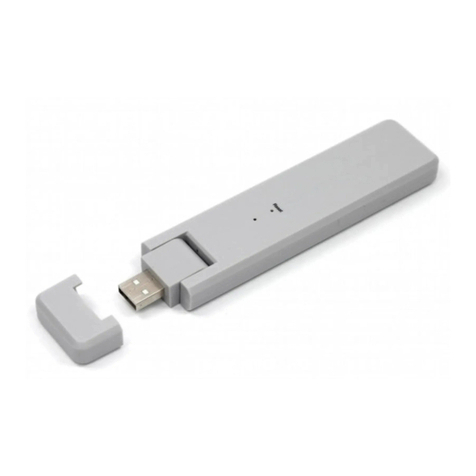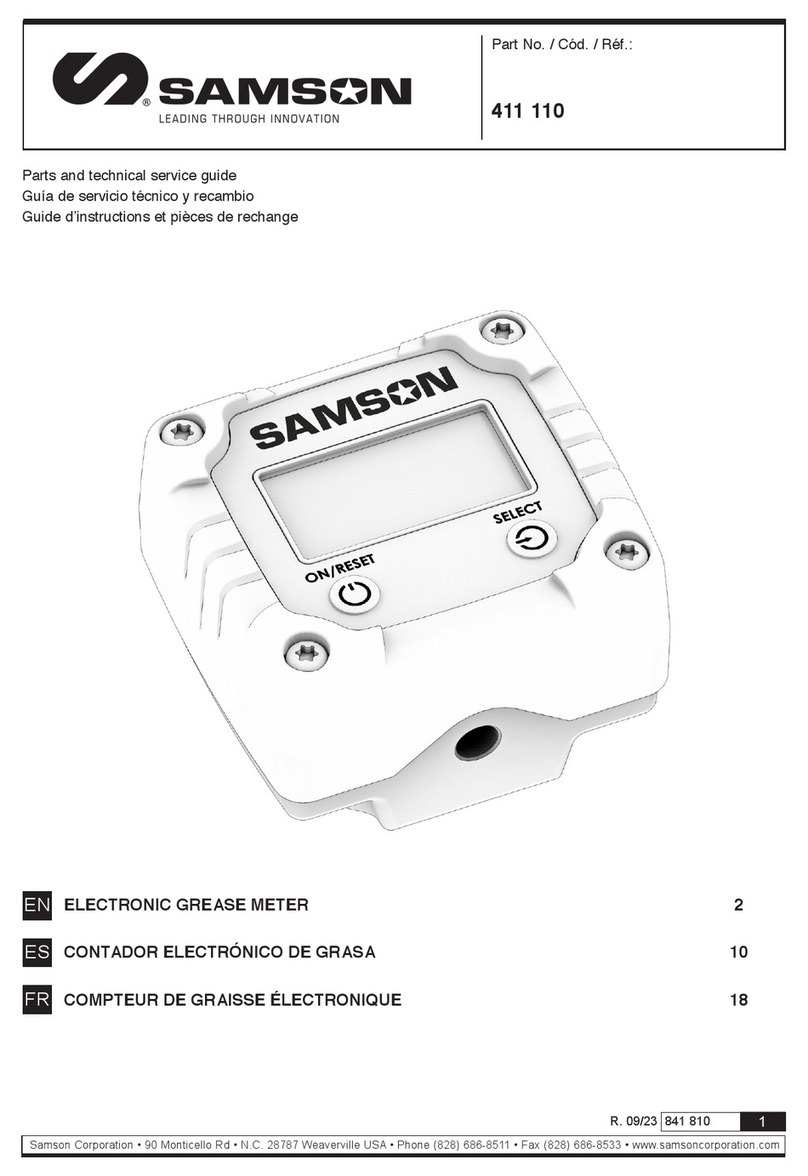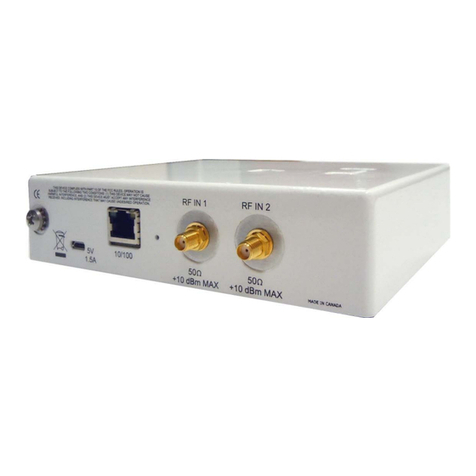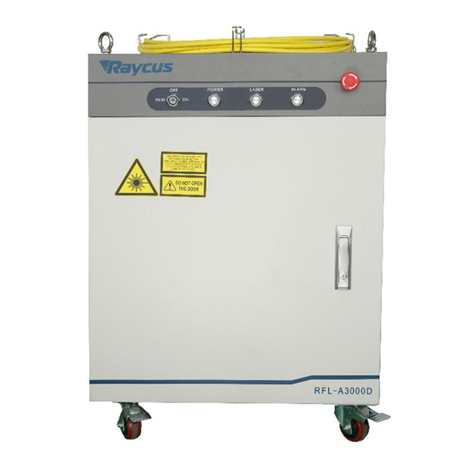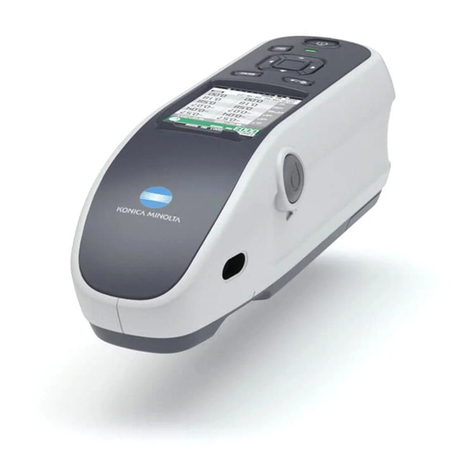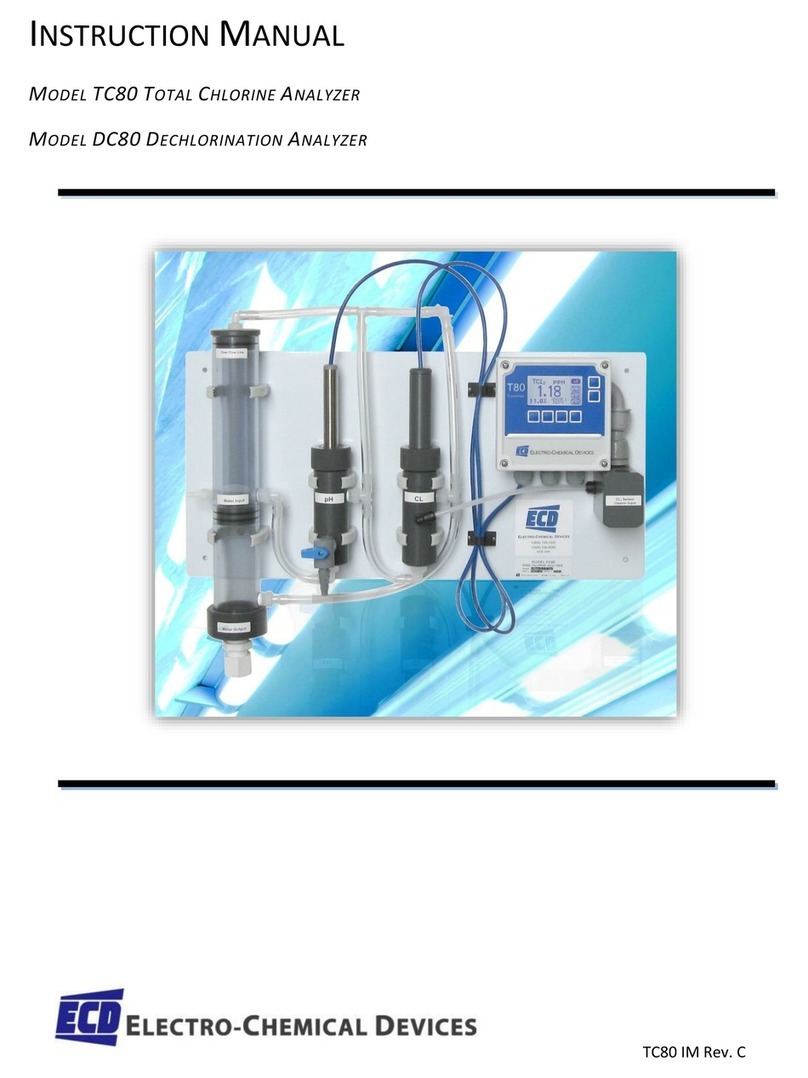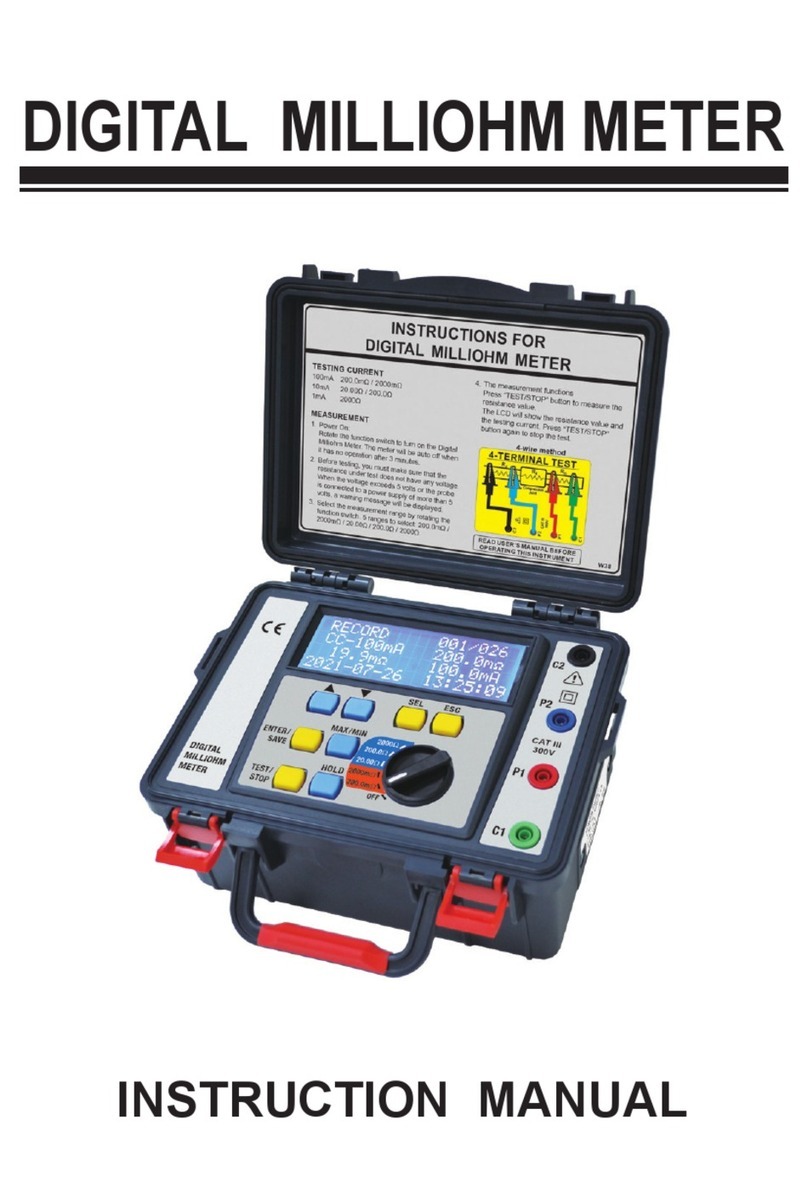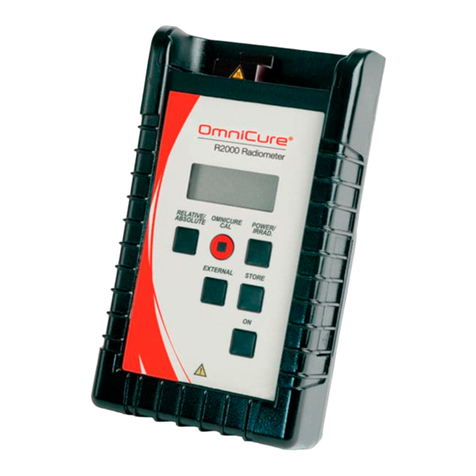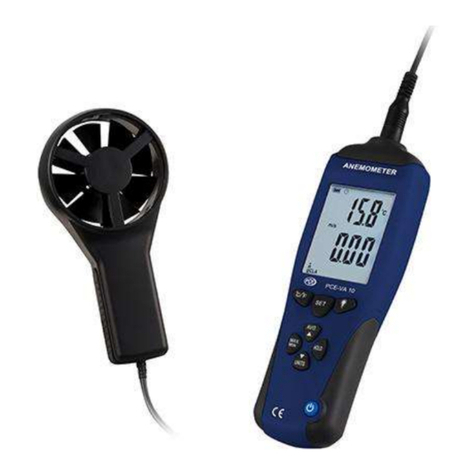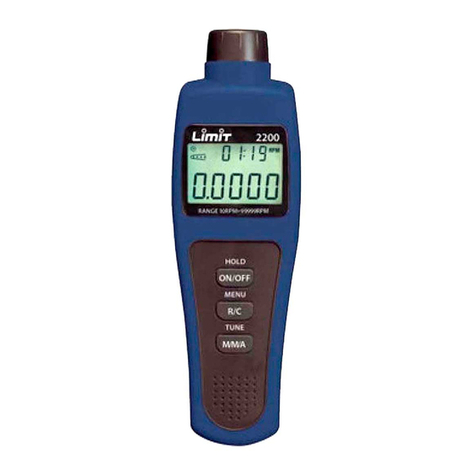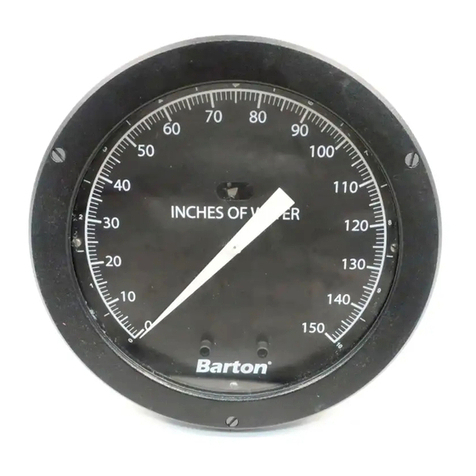Tsun TSOL-MS2000 User manual

G3 Plus Microinverter
V1.0
-
1 -
TSOL-MS2000
TSOL-MS1800
TSOL-MS1600
TSOL-MS2000(1500)
TSOL-MS2000(800)
TSOL-MS2000(600)

G3 Plus Microinverter
V1.0
-
2 -
Trademarks and Permissions
TSUN and other TSUNESS trademarks are trademarks of TSUNESS Co., Ltd. All other
trademarks and trade names mentioned in this document are the property of their respective
holders.
TSUNESS Co., Ltd makes no representations express or implied, with respect to this
documentation or any of the equipment and/or software it may describe, including (with no
limitation) any implied warranties of utility, merchantability, or fitness for any particular
purpose.
All such warranties are expressly disclaimed. Neither TSUNESS nor its distributors or dealers
shall be liable for any indirect, incidental, or consequential damages under any circumstances.
(The exclusion of implied warranties may not apply in all cases under some statutes, and thus
the above exclusion may not apply.)
Specifications are subject to change without notice. Every attempt has been made to make this
document complete, accurate, and up-to-date. Readers are cautioned, however, that TSUNESS
reserves the right to make changes without notice and shall not be responsible for any
damages, including indirect, incidental, or consequential damages, caused by reliance on the
material presented, including, but not limited to, omissions, typographical errors, arithmetical
errors or listing errors in the content material.
All trademarks are recognized even if these are not marked separately. Missing designations do
not mean that a product or brand is not a registered trademark. All trademarks are recognized
as the property of their respective owners.
Product information is subject to change without notice. User documentation is updated
frequently; Check www.tsun-ess.com for the latest information. To ensure optimal reliability
and meet warranty requirements, the TSUN Micro inverter must be installed according to the
instructions in this manual. For warranty text refer to www.tsun-ess.com.
© 2022 TSUNESS Co., Ltd All rights reserved.
Audience
This manual is intended for use by professional installation and maintenance personnel.

G3 Plus Microinverter
V1.0
-
3 -
Content
Trademarks and Permissions ............................................................................................................................................- 1 -
Audience...........................................................................................................................................................................- 2 -
Content..............................................................................................................................................................................- 3 -
Read This First..................................................................................................................................................................- 4 -
Important Safety Information..................................................................................................................................................................- 4 -
Product Label..........................................................................................................................................................................................- 4 -
System Introduction..........................................................................................................................................................- 6 -
Product Description ................................................................................................................................................................................- 7 -
Datasheet ................................................................................................................................................................................................- 7 -
Micro inverter Installation ..............................................................................................................................................- 10 -
Pre-installation Check...........................................................................................................................................................................- 10 -
Installation Steps...................................................................................................................................................................................- 10 -
TSUN Monitoring System..............................................................................................................................................- 17 -
Installer.................................................................................................................................................................................................- 17 -
End User ...............................................................................................................................................................................................- 18 -
Remote Active Power Control........................................................................................................................................- 19 -
Self-Test Function for Italy.............................................................................................................................................- 19 -
Fault Code and Troubleshooting.....................................................................................................................................- 20 -
Maintenance Guide.........................................................................................................................................................- 21 -
Routine Maintenance ............................................................................................................................................................................- 21 -
Storage and Dismantling.......................................................................................................................................................................- 21 -
Recycling and Disposal ..................................................................................................................................................- 22 -
Warranty Service.............................................................................................................................................................- 22 -
Exclusions.............................................................................................................................................................................................- 22 -
Distributor Responsibility.....................................................................................................................................................................- 23 -

G3 Plus Microinverter
V1.0
-
4 -
Read This First
Dear customer, thank you for choosing the G3 Plus series micro inverter from TSUN. We hope
you will find our products meet your needs for renewable energy. Meantime, we appreciate
your feedback regarding our products.
A solar micro inverter, or simply micro inverter, is a plug-and-play device used in
photovoltaics, that converts direct current (DC) generated by a single solar module to
alternating current (AC). The main advantage is that small amounts of shading, debris or, snow
lines on any single solar module, or even a complete module failure, do not disproportionately
reduce the output of the entire array. Each micro inverter harvests optimum power by
performing maximum power point tracking (MPPT) for its connected module. Simplicity in
system design, lower amperage wires, simplified stock management, and added safety are
other factors introduced with the micro inverter solution.
This manual contains important instructions for G3 Plus micro inverters and must be read in its
entirety before installing or commissioning the equipment. For safety, only qualified
technicians, who have received training or have demonstrated skills can install and maintain
this micro inverter under the guide of this document.
Important Safety Information
During installation, testing, and inspection, adherence to all the handling and safety
instructions is mandatory. Failure to do so may result in injury or loss of life and damage to the
equipment.
Product Label
The following safety symbols are used in this document. Familiarize yourself with the symbols
and their meaning before installing or operating the system.
DANGER
· DANGER indicates a hazardous situation that can result in deadly electric shock hazards,
other serious physical injury, or fire hazards.
WARNING
· WARNING indicates directions that must be fully understood and followed in their entirety
to avoid potential safety hazards including equipment damage or personal injury.
CAUTION

G3 Plus Microinverter
V1.0
-
5 -
· CAUTION indicates that the described operation must not be carried out. The reader should
stop using and fully understand the operations explained before proceeding.
The symbols on the micro inverter are listed below and illustrated in detail.
Symbol
Description
This device is directly connected to the public grid, thus all
work to the
inverter shall only be carried out by qualified personnel.
The components inside the inverter will release a lot of heat durin
g
operation. Do not touch metal plate housing during operation.
Please read the installation manual first before installation, operation,
and
maintenance.
Unauthorized removal of necessary protections, improper use, incorrect
installation,
and operation may lead to serious safety and shock hazards or
equipment damage.
This device needs to be disconnected and left to stand for a
t least 5 minutes
before opening the cover.
This device SHALL NOT be disposed of in residential waste.
This device fulfills the requirements of the Radio Equipment Directive.
This device complies with the RoHS Directive.
This device fulfills the requirements of INMETRO.
This device fulfills the requirements of ANATEL, the certificate number is
11057-23-15833.

G3 Plus Microinverter
V1.0
-
6 -
System Introduction
The G3 Plus micro inverter is used in grid-tied applications, comprised of two key elements:
G3 Plus Micro inverter.
TSUN Monitoring System.
The micro inverter converts the DC electricity generated by solar panels into AC electricity
which is in accordance with the requirements of the public grid and sends the AC into the grid,
reducing the load pressure of the grid.
The micro inverter is integrated with the Wi-Fi module and connects to the home Wi-Fi router
directly. Users can monitor the power generation of the system by TSUN Monitoring App.

G3 Plus Microinverter
V1.0
-
7 -
Product Description
A Mounting Hole D AC Cable
B Grounding Hole E Antenna
C
DC Cables
F
Status Light
Datasheet
Model TSOL-MS1600 TSOL-MS1800 TSOL-MS2000
Input Data (DC)
Recommended Module Power (W) 300 - 700+ 300 - 700+ 300 - 700+
Start-up Voltage per Input (V) 22
Rated Input Voltage (V) 42
MPPT Voltage Range per Input (V) 16~60
Max. Input Voltage per Input (V) 60
Max. Short-circuit Current per Input
(A) 25 25 25
Max. Input Current per Input (A) 16 16 16
Quantity of MPPT 4
Max. Inverter Back-feed Current to
the Array (A) 0
Output Data (AC)
Max. Output Power (VA) 1600 1800 2000
Nominal Continuous Output Power
(W) 1600 1800 2000
Nominal Output Current (A) 7 7.8 8.7
Max. Output Current (A) 8 9 10
Inrush Current (A) 12 15 15
Max. Output Fault Current (A) 32 40 40
Max. Output Overcurrent Protection
(A) 18 18 18
Nominal Output Voltage/Range (V)* 220/230/240, 175 – 270, L/N/PE

G3 Plus Microinverter
V1.0
-
8 -
Nominal Frequency (Hz)* 50/60
Power Factor >0.99 default,0.8 leading … 0.8 lagging
Output Current Harmonic Distortion <3%
Efficiency
Peak Inverter Efficiency 96.7% 96.7% 96.7%
CEC Weighted Efficiency 96.5% 96.5% 96.5%
Nominal Mppt Efficiency 99.9% 99.9% 99.9%
Nighttime Power Consumption <50mW <50mW <50mW
Protection
Anti-Islanding protection
Integrated
Insulation monitoring
Integrated
AC surge protection
TYPE II
AC overcurrent protection Integrated
AC short-circuit protection Integrated
AC overvoltage protection Integrated
Over-heat protection Integrated
Mechanical Data
Dimensions (W×H×D mm) 331 * 261 * 44
Weight [kg] 5.5
General Data
Display
LED indicators; TSUN APP+WEB
Communication
built-in WiFi module
Type of Isolation Galvanically Isolated HF Transformer
Type of Enclosure IP67
Protection Class I
Cooling Natural convection
Operating Ambient Temperature
Range -40 ~ +65 (derating of over 50°C Ambient Temperature)
Relative Humidity 100%
Max. Operating Altitude Without
Derating [m] 2000
※The AC voltage and frequency range may vary depending on specific country grid.
Model TSOL-MS2000(600) TSOL-MS2000(800) TSOL-MS2000(1500)
Input Data (DC)
Recommended Module Power (W) 300 - 700+ 300 - 700+ 300 - 700+
Start-up Voltage per Input (V) 22
Rated Input Voltage (V) 42
MPPT Voltage Range per Input (V) 16~60
Max. Input Voltage per Input (V) 60
Max. Short-circuit Current per Input
(A) 25 25 25
Max. Input Current per Input (A) 16 16 16
Quantity of MPPT 4
Max. Inverter Back-feed Current to 0

G3 Plus Microinverter
V1.0
-
9 -
the Array (A)
Output Data (AC)
Max. Output Power (VA) 600 800 1500
Nominal Continuous Output Power
(W) 600 800 1500
Nominal Output Current (A) 2.6 3.6 6.52
Max. Output Current (A) 3 4 7.5
Inrush Current (A) 5 6 12
Max. Output Fault Current (A) 14 16 32
Max. Output Overcurrent Protection
(A) 8 8 18
Nominal Output Voltage/Range (V)* 220/230/240, 175 – 270, L/N/PE
Nominal Frequency (Hz)* 50/60
Power Factor >0.99 default,0.8 leading … 0.8 lagging
Output Current Harmonic Distortion <3%
Efficiency
Peak Inverter Efficiency 96.7% 96.7% 96.7%
CEC Weighted Efficiency 96.5% 96.5% 96.5%
Nominal Mppt Efficiency 99.9% 99.9% 99.9%
Nighttime Power Consumption <50mW <50mW <50mW
Protection
Anti-Islanding protection
Integrated
Insulation monitoring Integrated
AC surge protection TYPE II
AC overcurrent protection Integrated
AC short-circuit protection Integrated
AC overvoltage protection Integrated
Over-heat protection
Integrated
Mechanical Data
Dimensions (W×H×D mm) 331 * 261 * 44
Weight [kg] 5.5
General Data
Display LED indicators; TSUN APP+WEB
Communication built-in WiFi module
Type of Isolation Galvanically Isolated HF Transformer
Type of Enclosure IP67
Protection Class I
Cooling Natural convection
Operating Ambient Temperature
Range -40 ~ +65 (derating of over 50°C Ambient Temperature)
Relative Humidity 100%
Max. Operating Altitude Without
Derating [m] 2000
※The AC voltage and frequency range may vary depending on specific country grid.

G3 Plus Microinverter
V1.0
-
10
-
TSUNESS Co., Ltd declares that the radio equipment (Micro inverter) complies with Directive
2014/53/EU. The full text of the EU declaration of conformity is available at the following internet
address: https://www.tsun-ess.com/File/$random-2023-07-15-061950--45dN$MQ
OPERATING FREQUENCY (the maximum transmitted power)
2412MHz—2472MHz(EIRP <20dBm)
2402MHz—2480MHz(EIRP <10dBm)
Micro inverter Installation
Pre-installation Check
Check the Package
Although TSUN’s micro inverters have surpassed stringent testing and are checked before they leave
the factory, it is uncertain that the micro inverters may suffer damage during transportation. Please
check the package for any obvious signs of damage, and if such evidence is present, do not open the
package and contact your dealer as soon as possible.
Check the Installation Environment and Position
When choosing the position of installation, comply with the following conditions:
To avoid unwanted power derating due to an increase in the internal temperature of the inverter,
do not expose it to direct sunlight.
To avoid overheating, always make sure the flow of air around the inverter is not blocked.
Do not install in places where gasses or flammable substances may be present.
Avoid electromagnetic interference that can compromise the correct operation of electronic
equipment.
It’s recommended to install micro inverter on structures underneath the photovoltaic modules so
that they work in the shade without touching the rooftop.
Use a mobile phone to check the Wi-Fi signal strength at the micro inverter installation position. If
the Wi-Fi signal is weak, try to install the micro inverter in another place with a better signal, or
move the Wi-Fi router or repeater closer.
Installation Steps
DANGER
·Only qualified personnel should install, troubleshoot, or replace G3 Plus micro inverters or
the cable and accessories.
·Before installation, check the unit to ensure the absence of any transport or handling damage,
which could affect insulation integrity or safety clearances.

G3 Plus Microinverter
V1.0
-
11
-
·Unauthorized removal of necessary protections, improper use, incorrect installation and
operation may lead to serious safety, and shock hazards or equipment damage.
·Be aware that installation of this equipment includes the risk of electric shock.
Step 1. Fix the micro inverter.
DANGER
·Do not install the equipment in adverse environment conditions such as flammable,
explosive, corrosive, extremely high or low temperature, and humid.
WARNING
·Choose the installation location carefully and adhere to specified cooling requirements.
Micro-
inverter should be installed in a suitable position with good ventilation and no directly
sunshine.
CAUTION
·There are no screws and nuts in the package.
·The distance between every two micro-inverters should meet the
length of AC cables. The
length of the AC cable is 2.5m.
Choose the best installation position. Use two pairs of screws and nuts to fix the micro inverter on
the frame. Make sure that the label of the micro inverter should be the upside.
Step 2. Connect the ground cable
WARNING
·Ensure that all the micro inverters are well grounded.

G3 Plus Microinverter
V1.0
-
12
-
·Use ɸ6 screw for the ground port.
Connect the ground cable to the enclosure of the micro inverter.
Step 3. Connect the AC cable of two micro inverters
WARNING
·According to the max current of the AC cables, there is a max installation quantity for the
micro-inverter in each cable section.
Model Quantities for each cable section
TSOL-MS2000(600)
8
TSOL-MS2000(800) 6
TSOL-MS2000(1500) 3
TSOL-MS1600 3
TSOL-MS1800 2
TSOL-MS2000
2
Every micro-inverter could be connected to the other one by its AC cables.
Plug the female AC connector of one micro inverter into a male AC connector of another
micro-inverter to form a continuous AC branch circuit.
Use Nylon cable ties to fix the AC cables onto the frame.

G3 Plus Microinverter
V1.0
-
13
-
Use a Connector Protective Cap to make sure the unused AC connector to be closed.
Step 4. Connect the AC end cable of each cable section
DANGER
·Do not install the AC junction box without first removing AC power from the system.
·To prevent electrical hazards, make sure the micro-
inverter system is disconnected from the
home distribution network and the AC breaker is open.
WARNING
·Ensure that all AC cables are correctly wired and that none of the wires are pinched or
damaged.
·Use AWG 12 (4 mm²) cable for AC end cable.
CAUTION
·The installation technician is responsible for selecting a kind of AC cable and connecting the
micro-inverter system to the home distribution network correctly.
·The AC connectors may be provided by different suppliers. The port definitions are sub
ject to
actual objects.
Take out the AC connector from the package. Separate the AC connector as shown below.

G3 Plus Microinverter
V1.0
-
14
-
Get the AC cable through the shell of AC connector and connect the cable to the right port.
The definition of the port is shown below:
Reassemble the AC connector as shown below.
Plug the AC connector into the micro inverter and connect the AC cable to the AC distribution box.
L: Live (Brown/Red)
N: Neutral (Blue/Black)
PE: Ground (Yellow-Green)

G3 Plus Microinverter
V1.0
-
15
-
Step 5. Connect the DC cable
DANGER
·When photovoltaic panels are exposed to light, it provides a DC voltage to the inverter.
WARNING
·Ensure that all DC cables are correctly wired and that none of the wires are pinched or
damaged.
·The maximum open circuit voltage of t
he PV module must not exceed the specified
maximum input DC voltage of the micro inverter.
CAUTION
·If the DC cable is too short for installation, use a DC Extension Cable to connect PV modules
to the micro inverter.
·Use MC4 compatible DC connectors in the inverter side of the
DC extension cable, or get the
DC connectors from TSUN.
·Contact PV module manufacturers for the requirements of the
DC connectors in the module
side of DC extension cable.
Install the PV modules and connect the DC cable to the micro inverter.
Step 6. Make an installation map
CAUTION
·If there is more than one installation site, please make the installation map separately and

G3 Plus Microinverter
V1.0
-
16
-
give a clear description of the installation site.
·The row of the table corresponds to the shorter side of the
PV module and the column of the
table corresponds to the longer side of the PV module. The direction i
n the upper left corner
means the actual installation orientation.
Take out the SN labels and installation map from the package. Paste the SN labels on the installation
map below and complete the information on the solar plant.
Step 7. Start the System
DANGER
·Only qualified personnel should connect this system to the utility grid.
CAUTION
·Do not connect the micro inverter(s) to the grid, nor energize the AC circuit(s) until you have
completed all installation procedures and have received prior approval from the electricity
utility company.
While installation is all finished, turn on the main utility-grid AC circuit breaker. Your system will
start producing power after about a two-minute wait time.
The LED will flash green and red on startup. The LED definition is shown below:
Status Indicates
Flashing Green (0.2-0.8 ) Working normally
Flashing Green (0.2-3.8) Wi-Fi abnormally
Flashing Red Working abnormally
Solid Red Fault

G3 Plus Microinverter
V1.0
-
17
-
TSUN Monitoring System
The G3 Plus series micro inverter has an integrated monitoring module inside. The microinverter will
directly connect to the router (Wi-Fi Version). Users can use the TSUN Smart APP or enter the
TSUN website to monitor the microinverter.
Installer
Ask for an installer account from the distributor or TSUN.
Visit pro.talent-monitoring.com to find the TSUN Monitoring and Management Portal platform.
Visit “Google Play” or “Apple Store” and “TSUN SMART”. Download and install it in the mobile
phone.
TSUN Smart
Visit https://www.tsun-ess.com/File/$random-2023-09-16-090226-V_oc_7$B or Scan the QR code
below to find the latest User Guidance of TSUN Monitoring System.

G3 Plus Microinverter
V1.0
-
18
-
User Guidance of TSUN Monitoring System
End User
Visit “Google Play” or “Apple Store” and “TSUN SMART”. Download and install it in the mobile
phone.
TSUN Smart
Register a new account in TSUN SMART.
Visit https://www.tsun-ess.com/File/$random-2023-09-16-090024-_912he0N or Scan the QR code
below to find the latest User Guidance of TSUN SMART.
User Guidance of TSUN Smart

G3 Plus Microinverter
V1.0
-
19
-
Remote Active Power Control
In some countries, it might be required that the generating plants should be equipped with a logic
interface (input port) to cease the output of active power or limit active power to a regulated level.
This logic input can be the RS485 port, Ethernet port, and so on. TSUN micro inverter provides an
extra power control device that contains an RS485 port for this remote active power control. For
more information, refer to the “User Manual of TSUN power control device”.
Self-Test Function for Italy
TSUN micro inverter and TSUN Monitoring System provide a Self-test function for the Italy market.
For more information, refer to the “User Guidance of Self-test Function”.

G3 Plus Microinverter
V1.0
-
20
-
Fault Code and Troubleshooting
Code Fault Information Troubleshooting
1 PV_Input Overvoltage
1)Check the photovoltaic module output voltage to ensure
it is within the required range.
2)If the fault still exists, check on site.
2 PV_Low Input Voltage
It is normal to occur in the morning and evening.
If it occurs during the day, go to site and check the
connections of the photovoltaic modules to ensure that the
wiring is normal.
3 AC Overvoltage 1)The power grid fluctuates abnormally and will
automatically recover after a period of time.
2)If the fault still exists, check the protection setting.
3)If the fault still exists, check on site.
4 AC Undervoltage
5 AC Overfrequency
6 AC Underfrequency
7 Overtemperature 1)Check the installation environment to ensure heat
dissipation.
2)If the fault still exists, contact TSUN.
8 No Utility
1) Check the AC wiring in the distribution box or socket.
2) Check the connection and wiring of AC connector.
3) If the fault still exists, contact TSUN.
9 Fault09 If the fault exists all the time, contact TSUN.
10 Fault10 If the fault exists all the time, contact TSUN.
11 Fault11
Check in the site. Measure the voltage between PV+ and
ground as well as the voltage between PV- and ground. If
the two values are the same, check the system connection.
If the two values are different, try to replace a new
microinverter and test again.
12 Fault12-19 If the fault exists all the time, contact TSUN.
Other manuals for TSOL-MS2000
1
This manual suits for next models
5
Table of contents
Languages:
Other Tsun Measuring Instrument manuals
Popular Measuring Instrument manuals by other brands

Alpen Optics
Alpen Optics CRESTONE XP 7x24 instruction manual

Teledyne
Teledyne HVD3102 Operator's manual
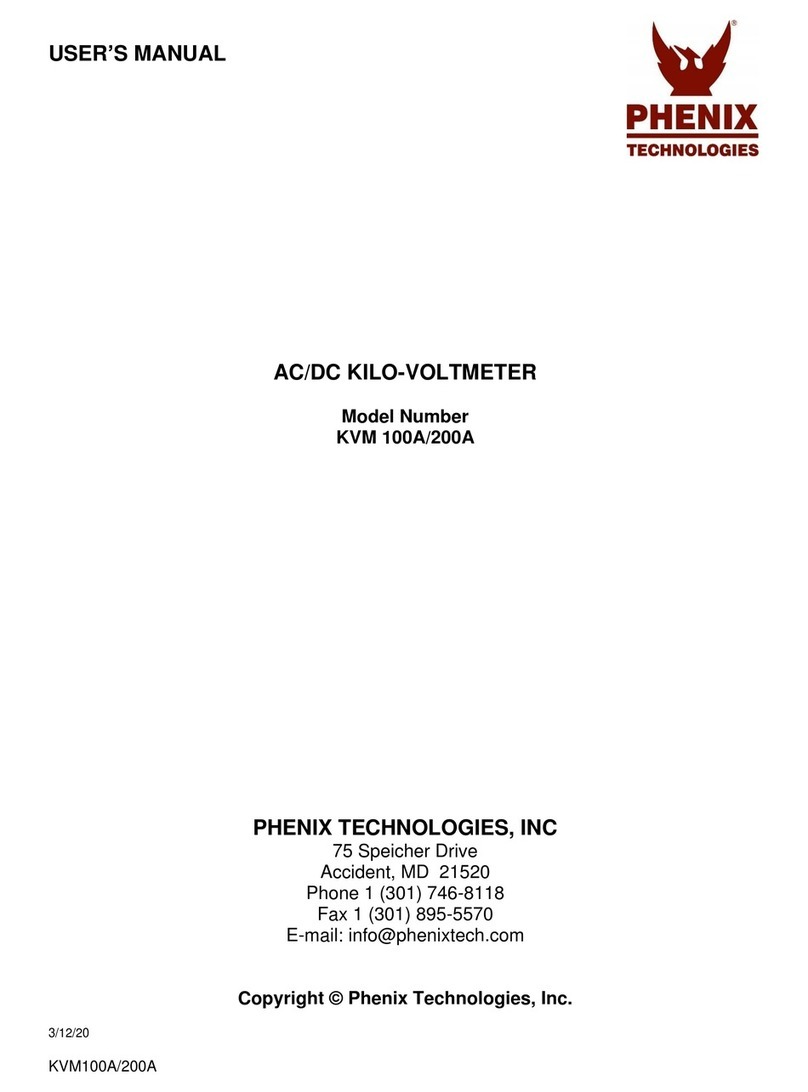
Phenix Technologies
Phenix Technologies KVM 100A user manual
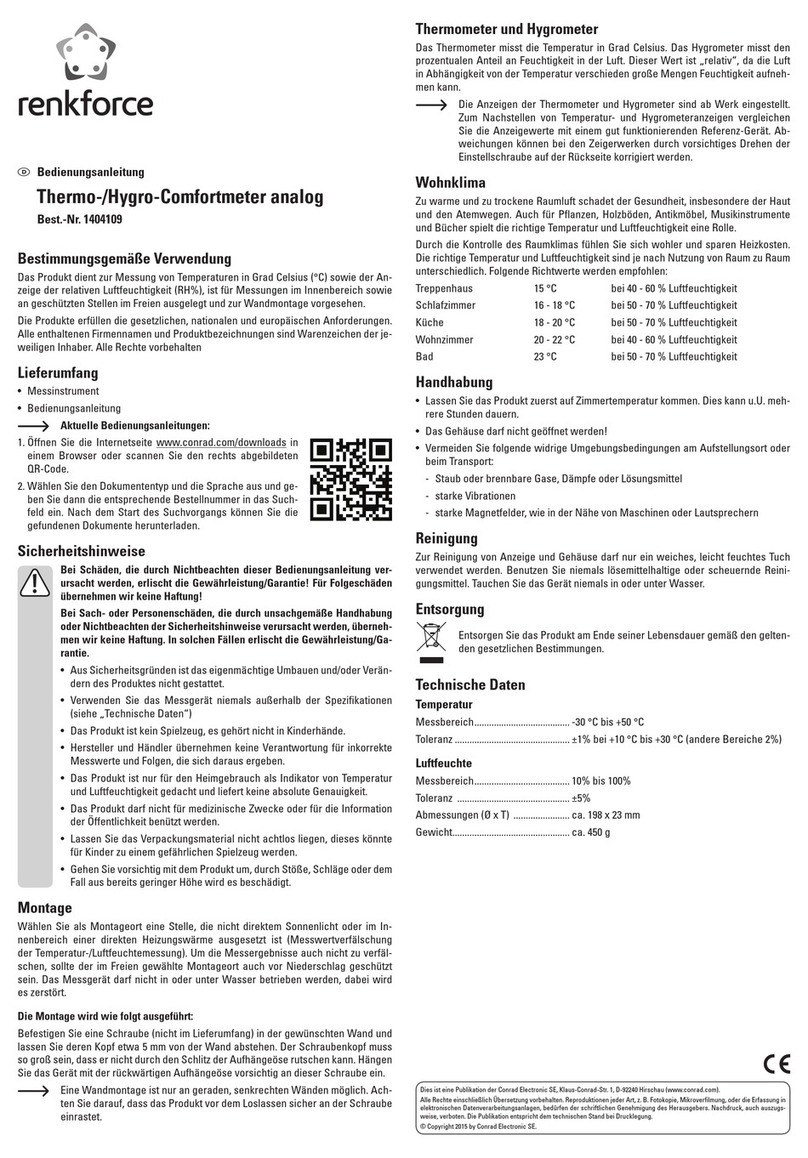
Renkforce
Renkforce 1404109 operating instructions
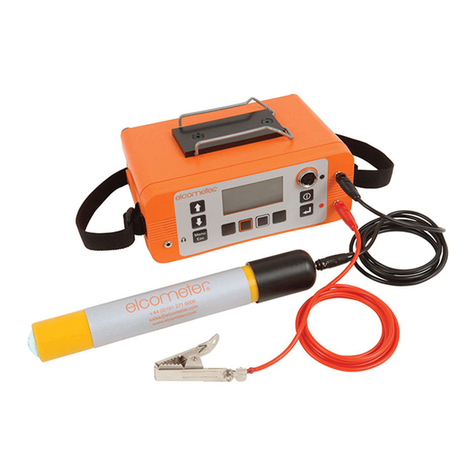
Elcometer
Elcometer 331 SH operating instructions
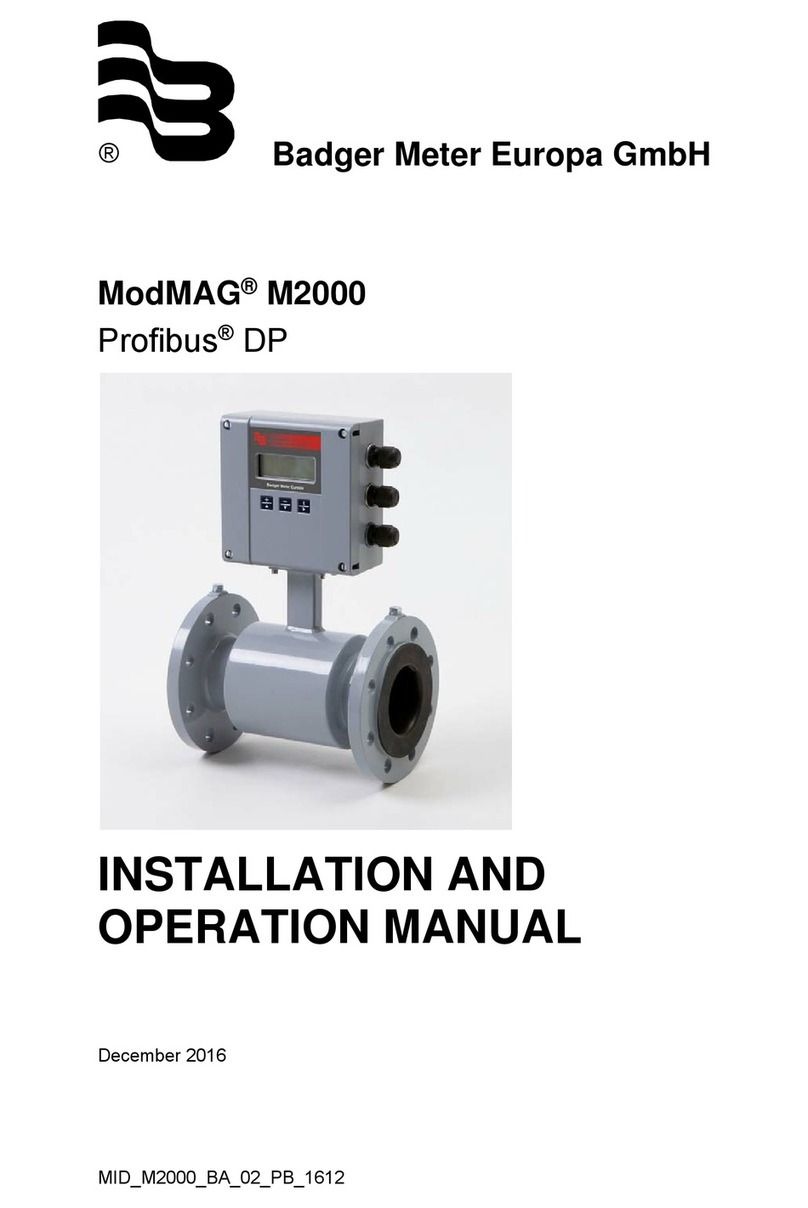
Badger Basket
Badger Basket ModMag M2000 Installation and operation manual
